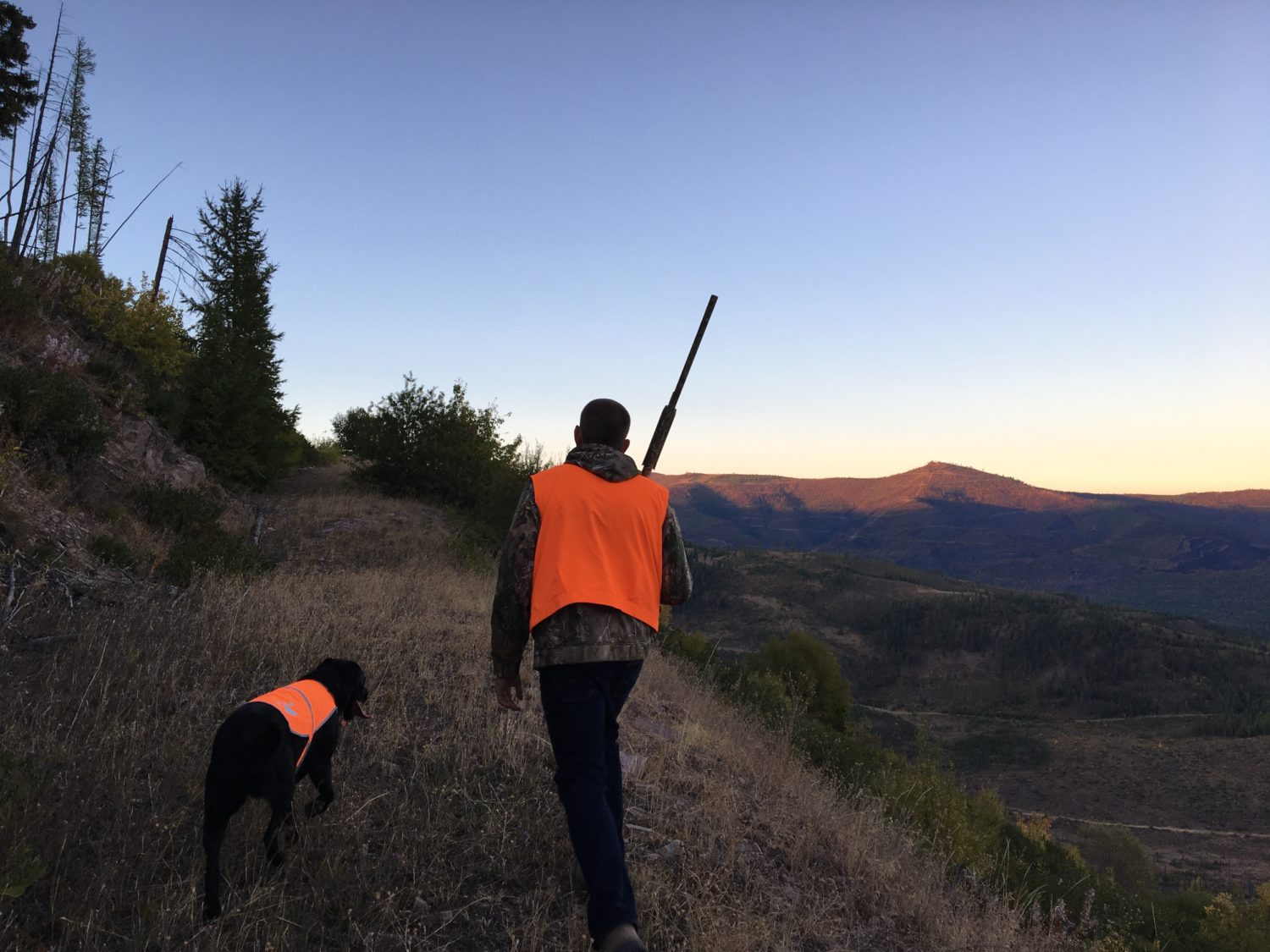Sleepy towns awaken across Big Sky Country as hunters flood in to take advantage of opportunities to access private land with great wildlife habitat
I willingly endure a 60-mile daily commute from my home on Maryland’s rural Eastern Shore to downtown Washington, D.C., in order to raise my family amidst the farm fields and tidewaters of Chesapeake Bay country and to wake up on bitter winter weekends just eight miles from my duck blind and deer stand. My love of the slower pace of rural places, and my affinity for the cackle of pheasants, also brings me to the northeast corner of Montana each fall, when good friends converge on the Eastern Hi-Line with a few great bird dogs.
Perched on the prairies, this isn’t the blanket of national public lands some think of when Montana comes to mind. This is country dominated by small grains and big expanses of private lands grazing, where a breeze blowing less than 20 miles per hour barely registers with the locals.
It is a hard place to scratch out a living. Abandoned homesteads are eerie reminders that this is a place where rail cars and cattle far outnumber people. But, when we pull over to prepare a push through a particularly promising cattail slough or a birdy-looking Russian olive windbreak, we never fail to see pickup trucks with blaze-orange hats on the dash cruise by us on the gravel section roads. The Main Street diners sling bacon and black coffee as fast as they can in the morning, and there’s not an open barstool to be found in the evenings.
 Hunting season brings a lot of activity to these otherwise quiet locales, the kind of places one hesitates to call ‘towns’—they are more like places where the speed limit changes. But they come to life as bird hunters with open wallets come from across the country to walk the coulees and draws. You get the sense that, in an economic setting otherwise completely dominated by agriculture of one form or another, hunting season represents a financial bright spot for businesses of all kinds, from the aforementioned bars and restaurants to hardware stores, sporting goods stores, motels, grocers, and gas stations. What may be a week-long vacation for some out-of-town hunter helps to smooth the fiscal bumps inherent in any small town business plan.
Hunting season brings a lot of activity to these otherwise quiet locales, the kind of places one hesitates to call ‘towns’—they are more like places where the speed limit changes. But they come to life as bird hunters with open wallets come from across the country to walk the coulees and draws. You get the sense that, in an economic setting otherwise completely dominated by agriculture of one form or another, hunting season represents a financial bright spot for businesses of all kinds, from the aforementioned bars and restaurants to hardware stores, sporting goods stores, motels, grocers, and gas stations. What may be a week-long vacation for some out-of-town hunter helps to smooth the fiscal bumps inherent in any small town business plan.
This economic windfall depends, almost entirely, on private acres. I hunted for four full days, harvesting pheasants, sharptail grouse, and Hungarian partridge, and never stepped foot on a publicly-owned acre. But thanks to Montana’s fantastic Block Management Program and their Upland Game Bird Enhancement Program, both made possible in part by the federal Farm Bill’s Voluntary Public Access and Habitat Incentive Program (VPA-HIP), high quality and productive private acres beckon the upland hunter. These programs—and programs like them all over the country—provide incentives to willing landowners to make their farms and ranches accessible to hunters, and they represent a kind of critical infrastructure for local economies. These programs are the fuel that keeps the economic engine of rural America humming.
Just as importantly, VPA-HIP (and the state programs it supports) help landowners to maintain or restore habitat on their property. It wouldn’t be much of a hunting season without something to hunt, and thanks to the Farm Bill’s investment in private lands conservation our dogs were able to scare up plenty of birds.
We’re celebrating VPA-HIP at a critical time. This year’s presidential election illustrated clearly how disconnected rural Americans feel from the rest of the nation, and revealed the worry that a huge segment of our country possesses about their future economic stability. We should let the full motels and packed diners of the Montana prairies during hunting season illustrate that the next chapter of America’s rural revalorization should start with outdoor recreation.
Check back in two weeks for more about the benefits of VPA-HIP, the “open fields” of our co-founder’s imagination. And learn more about our agriculture and private lands programs and partners right now.

















I constantly tell frequently tell my readers about the economic value that hunting and fishing bring to our communities. At the same time I am careful about the kind of image I project on behalf of the sporting community. I’m not sure that presenting a headline that reads “A Farm Bill Program Filling Bag Limits and Bar Stools in Montana” is the kind of image that does the sporting community any justice given the cultural attitudes about hunting these days. I think “bag limits and eateries” would have made the point without validating the anti-hunting crowd’s belief that we are all a nothing but a bunch of cigar smoking, flannel shirted, skirt chasing, drunks (Governor Mario Cuomo).
American cultural attitudes are generally apathetic towards hunting and fishing. Non-hunters are either supportive or neutral. The crowd size of honest anti-hunters is roughly the same of those who fit Cuomo’s description of the cancer in our ranks. Mewling about the anti-hunting crowd does little but expend energy and validate comments from the peripheral. If you’re upset about the anti’s, then have the guts to challenge the poachers, the drunks, the skirt chasers, and the wound/kill everything types. Cull within our own peer group, and the anti’s will fade away.